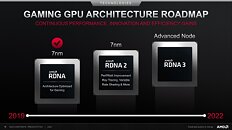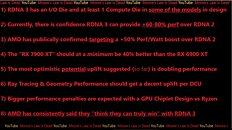
Biostar Unveils its Custom Radeon RX 7900-series Graphics Cards
BIOSTAR, a leading manufacturer of motherboards, graphics cards, and storage devices today, is excited to unveil two brand-new Radeon RX 7900 series graphics cards. Powered by the groundbreaking AMD RDNA 3 architecture, BIOSTAR is latest Radeon RX 7900XTX-24GB and RX 7900XT-20GB graphics cards deliver up to 50% more performance per watt than their previous generation RDNA 2 GPU units. Featuring AMD is superior RDNA 3 architecture and the world is fastest interconnect technology, the all-new BIOSTAR Radeon RX 7900XTX and RX 7900XT graphics cards combine 5 nm and 6 nm process nodes with updated chiplets that leverage AMD is Infinity Links and high-performance fanout packaging to deliver blazingly fast 5.3 TB/s bandwidth.
Unleash jaw-droppingly high frame-rates on AAA game titles with breathtaking 4K visuals powered by AMD is most advanced graphics technology with BIOSTAR is Radeon RX 7900XTX and RX 7900XT graphics cards. Ideal for gamers and content creators, they carry AMD is second-generation Infinity Cache technology and high-speed GDDR6 memory with up to a 384-bit memory interface.
Unleash jaw-droppingly high frame-rates on AAA game titles with breathtaking 4K visuals powered by AMD is most advanced graphics technology with BIOSTAR is Radeon RX 7900XTX and RX 7900XT graphics cards. Ideal for gamers and content creators, they carry AMD is second-generation Infinity Cache technology and high-speed GDDR6 memory with up to a 384-bit memory interface.










































































